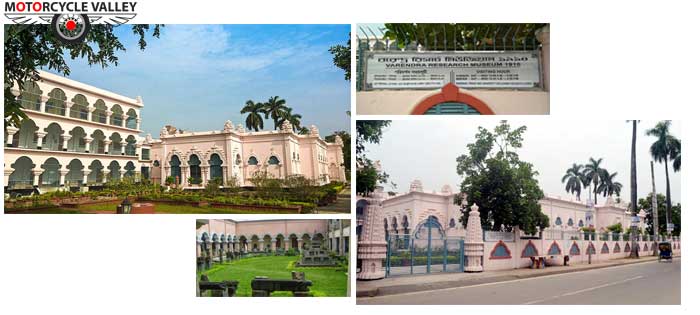Search
Barindra Research Museum
Barindra Research Museum

The Barindra Research Museum is located at Hetem Khan, this place is one of the major places of Rajshahi city. This is the first museum in Bangladesh. It is one of the best place for archeological collections in South Asia. Sarat Kumar Roy, zamidar of the Dighapatiya royal family of Natore, lawyer Akshay Kumar Motrya and teacher of Rajshahi Collegiate School Ramprasad Chandra have made significant contributions to the establishment of the Barindra Museum. In 1910, they formed the Barindra Research Society to collect and preserve the heritage and specimens of Bengal. In that year, they searched various places in Rajshahi and collected 32 rare specimens. Construction of the museum's own building began on land donated by Sarat Kumar Roy to preserve these artifacts. Construction was completed in 1913. The museum was inaugurated by the present Governor of Bengal, Carmichael, on 13 November of the same year. By asking any person walking in the city bikers can reach to this museum. The way to get here is from Rajshahi College to Rajshahi Court. You have to start from the Rajshahi Collage and going a little further from Rajshahi College and you will see the Barindra Research Museum on the right hand side. Another road is City College and Medical College. A 4-lane turn will take place just a few moments away from City College.
The Barindra Research Museum is on the left hand side from that turn. The collection of Barindra Museum is more than 9 thousand. There are traces of shidhu civilization thousands of years ago. Archaeological finds from the Mohenjodaro civilization, stone statues, Buddha statues built in the 11th century, the head of Bhairab, the Ganges and countless other statues are among the invaluable collections of this museum. The silver coins of the Mughal period, the round gold coins of the Gupta emperor Chandragupta, and the round silver coins of Emperor Shah Jahan are particularly noteworthy. There are about 5000 manuscripts out of which 3648 are in Sanskrit and the rest are in Bengali. Paintings from the Pal period to the Muslim period, by Imad ud-Daulah, Nurjahan's father are seen here.
The Barindra Research Museum is on the left hand side from that turn. The collection of Barindra Museum is more than 9 thousand. There are traces of shidhu civilization thousands of years ago. Archaeological finds from the Mohenjodaro civilization, stone statues, Buddha statues built in the 11th century, the head of Bhairab, the Ganges and countless other statues are among the invaluable collections of this museum. The silver coins of the Mughal period, the round gold coins of the Gupta emperor Chandragupta, and the round silver coins of Emperor Shah Jahan are particularly noteworthy. There are about 5000 manuscripts out of which 3648 are in Sanskrit and the rest are in Bengali. Paintings from the Pal period to the Muslim period, by Imad ud-Daulah, Nurjahan's father are seen here.










